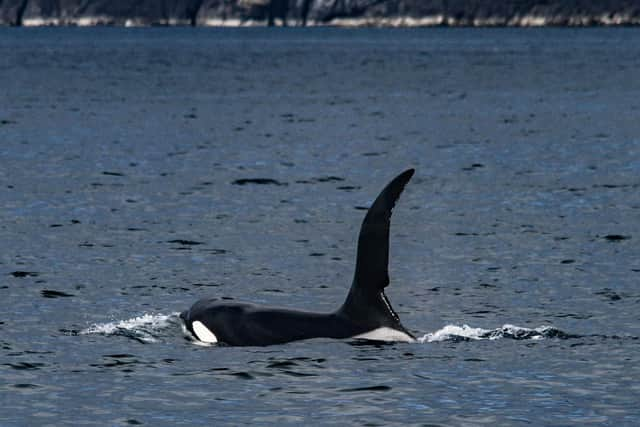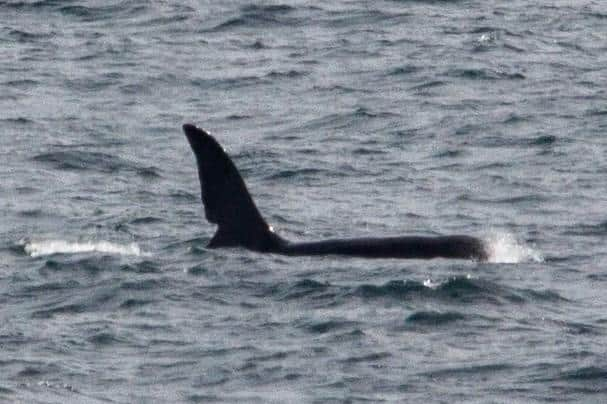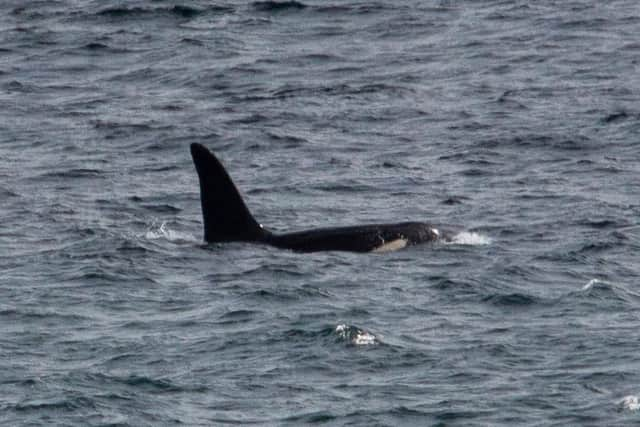Scotland's 'celebrity' killer whales back home after staycation in south of England
Well-known bulls John Coe and Aquarius belong to Scotland's only known resident pod of killer whales, also known as orcas.
The pair were seen near the picturesque fishing hamlet of Porthgwarra, in Cornwall, on 5 May.
Advertisement
Hide AdAdvertisement
Hide AdThey were captured on camera by local wildlife enthusiast Will McEnery-Cartwright, from Porthcurno in West Cornwall.


The location is the most southerly point the animals have ever been recorded and the first time they have been spotted in English waters, according to the marine wildlife charities Sea Watch Foundation, Hebridean Whale and Dolphin Trust and Irish Whale and Dolphin Group.
Only nine days later, the pair surfaced back in their more usual haunts in seas around the Hebrides.
They were photographed by Anthony Rigell from Waternish Point on the Isle of Skye on 14 May, around 550 miles north of Porthgwarra, and spotted again off Lochboisdale in South Uist by researchers aboard the Hebridean Whale and Dolphin Trust’s yacht Silurian on 17 May.
Mr McEnery-Cartwright was delighted to spot the two orcas during their unexpected visit to southern seas.


“This is a once in a lifetime event,” he said.
“I am so happy and proud to be part of this historical moment.
“To see these fantastic creatures is one thing, but to photograph them is just breathtaking.”


John Coe is one of the most distinctive killer whales seen around the UK, and easily recognisable by a deep nick near the base of his dorsal fin and a missing chunk on his tail fluke - thought to have been the result of a shark attack.
Advertisement
Hide AdAdvertisement
Hide AdHe and Aquarius are members of the threatened West Coast Community, a pod that has been tracked around Scotland over the past 50 years.
The group, which once numbered at least 20 individuals, has only eight surviving members - four males and four females, thought to be aged between 20 and 60 years old.
Researchers have warned the pod is likely to die out in the not too distant future as no calves have been observed in the past 23 years.


As well as John Coe and Aquarius, the other males are Comet and Floppy Fin, while the females have been named Nicola, Moneypenny, Puffin and Occasus.
Dr Lauren Hartny-Mills, science and conservation manager at the Hebridean Whale and Dolphin Trust, monitors sightings of the Scottish orca group off the west coast of Scotland:
“We are all absolutely thrilled that John Coe and Aquarius have been seen again,” she said.
“Will’s recent sighting off Cornwall really highlights how crucial public sightings data are in helping us monitor the movements of individual animals year after year.
“It shows how much we still have to learn about their movements, and it is fascinating to be able to add another important piece to the puzzle.
Advertisement
Hide AdAdvertisement
Hide Ad“Most of what we know about animals like John Coe and Aquarius is thanks to dedicated members of the public who send in their sightings and photographs of whales and dolphins to citizen science sightings schemes run by regional charities like Whale Track by Hebridean Whale and Dolphin Trust.”
